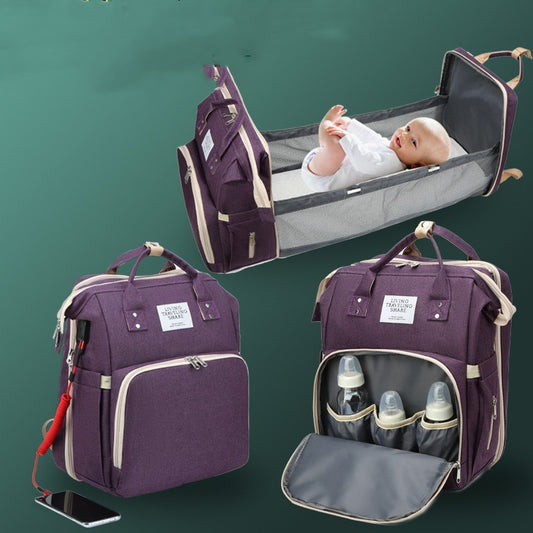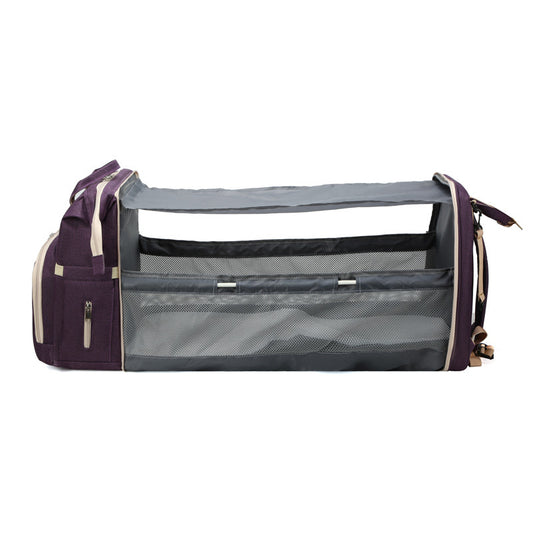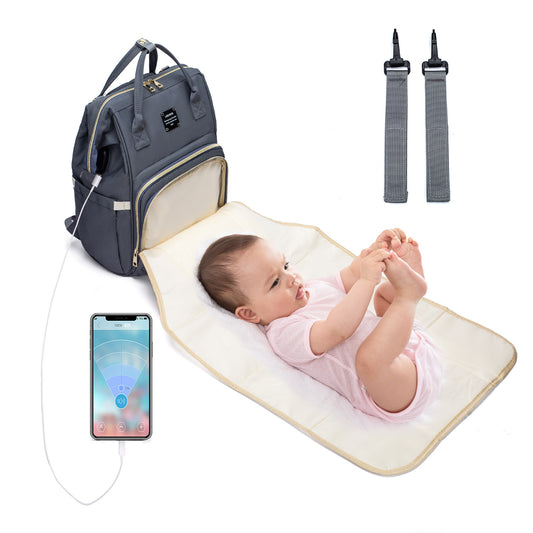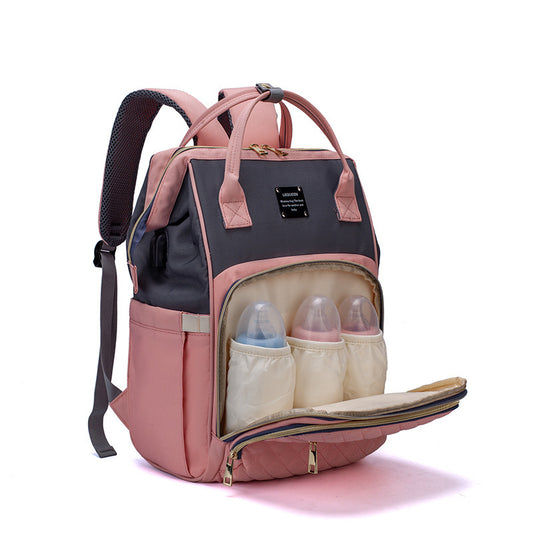From day trips to grocery runs, carrying baby essentials in a single well-organised bag is a necessity—not a luxury. One feature many modern baby changing bags now offer is insulated bottle holders. But is it just a trend, or do you actually need one?
In short: Yes, you do.
This guide breaks down why insulated bottle holders are a must-have, what benefits they bring to your day-to-day parenting, and how to choose the right baby bag that offers proper insulation — without overpaying.
Why Are Insulated Bottle Holders Important?
Baby bottles need to be kept at specific temperatures — whether for breast milk, formula, or snacks like yoghurt pouches. Without insulation, it becomes difficult to maintain the right temperature during long outings, travel or unpredictable UK weather.
Here’s why insulated bottle pockets are more than just a convenience:
1. Temperature Control
Depending on the season, you'll either be trying to keep bottles warm or prevent milk from spoiling. Insulated holders help maintain internal temperature for around 2–4 hours, minimising the need to reheat or cool while on the move.
2. Safe Feeding On-the-Go
Proper temperature = safer feeding. Formula or breast milk left for too long at room temp can quickly become unsafe. With insulation, bottles are better protected from external heat or cold exposure.
3. No Extra Bottle Bags Needed
Standalone bottle insulators cost £10–£15 each. A nappy bag with built-ins eliminates the need to carry separate warmers or sleeves.
4. Space-Efficient Design
Insulated pockets are usually integrated within the bag’s layout, saving space and keeping feeding items centralised, organised, and easy to reach.
What Kind of Bottles Can You Store?
Most insulated sections fit:
-
Standard 120–260ml bottles
-
Larger anti-colic designs
-
Thermos-style sippy cups or juice bottles
-
Food pouches and portable yoghurts
Make sure your chosen bag has deep and stretchable insulated pockets, especially for taller or thicker bottles like Tommee Tippee or MAM.
How Many Insulated Pockets Should You Look For?
Ideally:
-
At least two insulated compartments (for backup feeds, water, or snack variety)
-
Separated from clothing zones to avoid heating clothes or wipes
-
Easy access — front or side pockets are most practical
Some high-capacity nappy bags now include three insulated holders, allowing you to pack milk, water, and food separately.
Bags That Get It Right (Under £50)
Kidrya Large Nappy Backpack comes with:
-
Two front-insulated slots securely zippered
-
Internal wipes-deck + changing mat
-
USB port for working parents
-
Water-resistant cloth-friendly body
-
Wide colour range: Grey, Navy, Black, Beige
Price: £39.99 – £49.99
Kidrya Diaper Backpack with Fold-Out Cot
For under £45, this bag offers:
-
Two insulated zones
-
Integrated travel cot bed
-
Large capacity and buggy-compatible design
-
Best for long travel or full-day plans
Both combine modern design and insulation without adding bulk, making them an ideal choice for parents looking to buy smart.
Backpack vs Tote: Which Works Better for Insulation?
While some tote-style bags offer insulation, backpack models usually:
-
Retain temperature longer due to tighter closures
-
Include deeper, covered pouches
-
Prevent tipping/spillage through upright position
-
Provide better balance while carrying multiple insulated items
Other Feeding Features to Look For:
-
Wipe-clean interior lining for spills
-
Separate food pouch sections away from medicine or changing gear
-
Top-side bottle access for quick feeding on transport
-
Thermal compartments with inner lining like PEVA or foil
Common Scenarios Where Insulated Holders Make a Difference
1. Long train rides – No microwave or heating station, so keeping milk warm is vital.
2. Outdoor walks – Cooler months require bottle warmth for comfort feeding.
3. Delayed feeding schedules – Milk must remain fresh while baby isn’t hungry right away.
4. Nursery drop-offs – Preparing two feeds in advance? Insulated holders maintain both bottles for different times.
Checklist Before Buying:
-
Does it have at least 2 insulated pockets?
-
Do the pockets close securely?
-
Is the pocket deep enough for your specific bottle brand?
-
Are the insulated zones easily accessible (not buried at the bottom)?
-
Are they separated from the baby’s clothing or electronics?
-
Is the lining easy to clean if a bottle leaks?
Conclusion: It’s Not Optional—It’s Essential
When you're bottle feeding even occasionally, an insulated baby changing bag saves time, stress, and additional cost. It ensures your baby’s feeding needs are met — safely, promptly, and wherever you are.
Rather than carry a separate bottle insulation case or risk milk going to waste, the smartest solution is to invest in a baby bag that includes this feature from the start.
Brands like Kidrya.Store now offer bags under £50 with the same functional layout found in premium models — without compromising on insulation, comfort, or build.
FAQs: Baby Changing Bag with Insulated Bottle Holders
Q1: How long do insulated bottle pockets stay warm or cool?
Typically, 2–4 hours depending on the insulation material, outside temperature, and bottle quality. Combine with thermal bottles for added effectiveness.
Q2: Can I use ice packs in the baby bag?
Yes, if you're carrying perishable snacks in hotter weather. Make sure they’re sealed and packed in a waterproof food pocket.
Q3: Should I still use a separate bottle warmer?
Not during short trips. Insulated holders keep pre-heated milk warm for most outing durations. For long travel, you may prefer an electric bottle warmer as backup.
Q4: Are insulated pockets washable?
They can be wiped clean, but avoid machine washing. Use warm water and mild antibacterial wipes to maintain integrity.
Q5: Is an insulated bottle pocket more useful than a tech feature like USB?
Yes, for feeding-focused trips. USB ports are useful, but safely feeding your baby takes priority in most daily situations.





